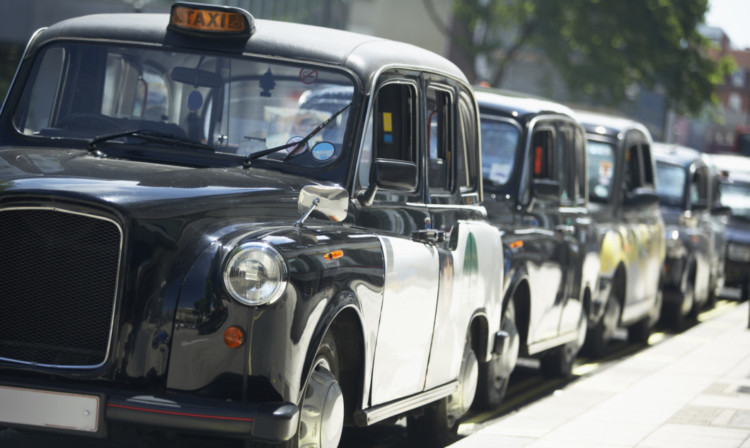
Taxi prices are just not fare.
Taxi customers in some areas of Scotland are having to pay a third more for journeys than passengers elsewhere.
A Sunday Post investigation has found a big disparity in cab fares in different parts of the country.
In the most expensive area, Aberdeenshire, a two-mile trip on a weekday will set punters back £6.
The cost rises to £12.60 for five miles, £23.60 for 10 miles and £45.60 for 20 miles.
But journeys of the same distances in North Lanarkshire, the cheapest area, cost up to £12.40 less.
There, a two-mile taxi trip costs £4.40, it’s £9.20 for five miles, £17.20 for 10 miles and £33.20 for 20 miles.
Critics have branded the gulf in rates unfair.
John MacDonald, of lobby group the The Community Transport Association, said: “It would be fairer to have equal rates countrywide.
“To use similar fares in Scotland’s biggest cities and in rural areas would help bring an end to this postcode lottery.”
There are around 10,000 taxi licences in Scotland. On top of that, there are an estimated 20,000 private hire drivers.
In many areas taxi fares are set by councils in consultation with drivers, although the Traffic Commissioner for Scotland can intervene if there is disagreement.
But fares are calculated in a baffling variety of ways.
On weekdays in Aberdeenshire it costs £2.60 for the first 880 yards and 20p per 160 yards after that. On Friday nights and weekends the first fee goes up to £3.60.
In the Borders it’s even more complicated. If there are fewer than five passengers it’s £2.15 to begin with and then 10p every 105 yards.
These fees rise to £3.15 and 15p when five or more people travel in larger vehicles and cabbies can also charge 25% more at weekends.
That means a two-mile journey for a family of four on a weekday comes in at £5.45.
Of the four big cities, Glasgow is the cheapest, where taxis charge £5 for two miles.
In Edinburgh on weekdays it’s a perplexing £2.10 for the first 527 metres, 25p for each additional 188m up to 2,031m and 25p per 217m after that or £5.60 for two miles.
In Aberdeen a two-mile journey costs £5.40 and in Dundee it’s £5.38.
Prices in all four cities rise in the evenings and at the weekend.
According to the National Private Hire Association, Fife (£5.80 for two miles), Midlothian (£5.80), East Lothian (£5.70), Dumfries and Galloway (£5.50) and Moray (£5.50) also sit at the top end of the taxi fares league table.
Towards the bottom are East Dunbartonshire (£4.60) Inverclyde (£4.70) and Highlands (£4.70).
William McIntosh, of the Scottish Taxi Federation, defended the situation. He said: “Higher fares tend to be in more rural areas where petrol is more expensive.
“Cars in those areas also have to travel longer distances in what we call ‘wasted mileage’ the distance between fares.
“That is different from somewhere like Glasgow, where rates are lower but drivers go almost directly from one fare to another.”
“Those factors make it impossible to offer just one standard.”
An Aberdeenshire Council spokesperson, where taxis are most expensive, said: “Our fares are set after extensive consultation with the taxi trade and the public, taking into account licence fees, fuel costs and maintaining vehicles to the high standard expected of licensed taxis.
“The national average for a taxi journey in Scotland is £5.58 per two miles and Aberdeenshire sits at £6.”
Scottish taxi passengers have seen fares rise 77% in the last 15 years.
Taxi customers in some areas of north England pay a third more for journeys than passengers elsewhere.
Our investigation found a wide disparity in cab fares in different parts of the country.
In the most expensive area, Harrogate, North Yorkshire, a two-mile weekday trip will set passengers back £6.60.
The cost rises to £12.60 for five miles, £22.60 for 10 miles and £42.60 for 20 miles.
But journeys of the same distance in Hartlepool the cheapest area cost up to £22.70 less.
In the north east town a two-mile trip costs just £3.70, £6.40 for five miles, £10.90 for 10 miles and £19.90 for 20 miles.
Critics say the gulf in rates is unfair.
John MacDonald, of lobby group The Community Transport Association, said: “I think it would be fairer to have equal rates operating countrywide.
“To use similar fares in the biggest cities and then similar fares in rural areas would help bring an end to this postcode lottery.”
Bryan Roland, of the National Private Hire Association (NPHA), admitted fares can be bewildering leaving passengers unsure of what they are actually paying.
He said: “If you don’t have a calculator or a degree in maths it’ll be difficult to work out if the driver is ripping you off.”
Harrogate District Council, where taxis are most expensive, uses a formula devised by Transport for London to calculate fares.
The considerations include costs of vehicles, parts, labour, fuel, insurance, local cost of living and local national average earnings.
Fares are reviewed on April 1 but there are no plans to change them this year.
A spokesman said: “The council acknowledges fares can seem high in comparison to some other councils.
“However the public want to retain the high quality service delivered by our taxi drivers.”

Enjoy the convenience of having The Sunday Post delivered as a digital ePaper straight to your smartphone, tablet or computer.
Subscribe for only £5.49 a month and enjoy all the benefits of the printed paper as a digital replica.
Subscribe